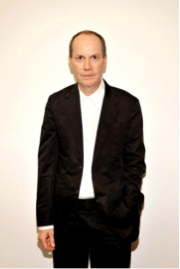
The Fair Use doctrine allows others to use copyrighted material without the copyright holder’s permission under certain circumstances. It sets limits on the exclusive rights copyright law grants copyright owners: the rights to reproduce, distribute, perform, display and make derivative works.
Originally a judicially created exception[1], Congress incorporated the fair use exception as a defense into the Copyright Act of 1976 under section 107. While “codified,” the Copyright Act does not precisely define fair use; nor does it provide specific examples.
The Act only offers an open list of areas “such as criticism, comment, [and] news reporting” (which may or may not be Fair Use) and four general factors to consider: (1) purpose and character of the use, which encompasses “transformative use”; (2) the nature of the copyrighted work; (3) the amount of the copyrighted work used; and (4) the effect of the use on the market for the copyrighted work.
As a result, Fair Use is often criticized as unpredictable, even doctrinally incoherent, as courts have applied it over the past thirty years. The Cariou v. Prince copyright saga has not yet added certainty to the field.
It’s been three years since French photographer Patrick Cariou sued Richard Prince, Larry Gagosian, Gagosian Gallery and Rizzoli books for copyright infringement. Prince’s “Canal Zone” series used aspects of at least 31 of Cariou’s ethnographic-style photos of Jamaican Rastafarians without Cariou’s consent. For example, Prince takes a Cariou photo of a Rastafarian against a dense growth of plants and then covers the man’s eyes with blue circles and places an electric guitar in his arms. Prince claimed “fair use,” arguing that he had transformed the original works, as opposed to simply producing what the Copyright Act would consider protected derivative images.
The United States District Court for the Southern District of New York granted Cariou’s motion for summary judgment on the issue of copyright infringement, noting that the pieces had very little “transformative” element. It ordered Prince and the Gagosian Gallery to deliver for impounding all infringing copies of Prince’s work. The gallery and its owners were also found liable for copyright infringement because they had distributed images and sold paintings from “Canal Zone” and had failed to investigate and ensure that Prince had obtained the requisite licenses to use Cariou’s photos. The judged stated that the gallery “at the very least [had] the right and ability (and perhaps even responsibility) to ensure Prince obtained licenses” and “the financial benefit of the infringing use to the Gagosian defendants is self-evident.”
Prince appealed the 2011 District Court decision and is awaiting review by the Second Circuit U.S. Court of Appeals. Since then, museums across the country have filed amicus briefs with the Court of Appeals arguing that the District Court’s decision, holding the gallery and its owners liable, would force them to hire lawyers to analyze works in their collection containing borrowed images. Given the widespread practice of referencing other images in 20th-century art, the cost to the museums would be unsustainable. The less costly, but the more disturbing option, certainly antithetical to the First Amendment principles that underline Fair Use, would be for museums to self-censor.
Cariou’s legal argument rests largely on the claim that Prince’s work failed to comment on or satirize Cariou’s photographs and, therefore, is not transformative. Prince (somewhat arrogantly) testified that that he had no real interest in the meaning behind Cariou’s work, and that he used it strictly as “raw material.” Cariou’s attorneys argue that taking copyrighted work in order to create “something new,” without any aesthetic significance or expressive purpose for the particular appropriation, has no limits and would effectively eviscerate the rights of copyright owners. In fact, Prince was unwilling to explain his art in court and even refused to call his use of Cariou’s photo “satire”, which is typically protected under Fair Use. Prince only offered the following as an explanation: “Hey, this guy is playing the guitar.”
Is this then taking for the sake of taking like Cariou’s lawyers argue? The District Court already balanced the four Fair Use factors finding against Prince in 2011. But will the Second Circuit decide differently, perhaps by choosing to emphasize a factor other than transformative use?
Consider this argument about market effect for a moment. Richard Prince is what is called a “Pictures Generation” artist, a member of that “movement” of artists takes both the commercial and artistic images that surround them, appropriates those images into their own work, and then “subverts” them. The popularity and strength of the Pictures Generation is clearly seen on the price tags on their works that may sell for millions, especially the early works of James Rosenquist and David Salle. Patrick Cariou is not a Pictures Generation artist, but is rather, an ethnographic photographer. Cariou markets a fly-on-the-wall style of reporting, while Prince markets the skepticism of culture. As Michael Rips points out in his opinion piece for the New York Times, it is for this reason that “the markets for Mr. Prince and Cariou are not just distinct; they are conflicting.” If a Prince consumer would not have otherwise spent money on a Cariou-style photo, how could Prince cause economic injury to Cariou? Should Prince be required to turn over his profits or revenue as penalty for infringement? Or can he invoke the fourth factor of Fair Use – effect on the market of the original copyrighted work – to argue that the de minimus monetary effect on Cariou’s market supports his Fair Use defense? Or, if it is the artistic movement, the Pictures Generation, with which Prince is connected that gives value to the paintings, rather than to Cariou’s images, does the context give rise to a “transformative” use?
Whichever Fair Use factor one wishes to emphasize – transformative use or market effect – there is a shifting perspective in the art world, where artists can appropriate works and then sell versions or alterations to collectors for millions of dollars without any benefit accruing to the lesser-known artist. In other art news, Origami artist Robert Lang is suing abstract painter Sarah Morris in the Northern District of California, claiming that she used his designs in her paintings without asking permission. Morris took several of Lang’s crease patterns and changed lines, added colors to the shapes and made the resulting images into very large paintings. Morris argues that the change in context and meaning is transformative. Currently no court date has been set, but Lang says his case is about getting credit for his craft and deciding how his work is used.
| Top Right: Origami moose crafted by Lang; Top Left: a Lang crease pattern; Bottom: Morris’ paintings |
As Cariou v. Prince awaits determination by the Court of Appeals, Prince has kept himself busy with another project. Last year, Prince hired a printer to create editions of The Catcher in the Rye after substituting his own name for J.D. Salinger’s on the jacket and title page, but leaving the rest of the novel unchanged. He then sold these in Central Park and at the MoMA art book fair. The project remains under the radar, but is a risky move nonetheless. Prince’s attitude of flaunting disregard for the copyright system and traditional art institutions raises the question of whether he is using the legal system itself as a medium to make art. Does that attitude and approach make the borrowing work itself a “commentary,” and, hence, an “elevated” transformative use for Fair Use purposes?
[1] See generally Matthew Sag, the Prehistory of Fair Use, 76 BROOK. L. REV. 1371 (2011). English authorities in the 1700’s considered a bona fide abridgment of an original work as not amounting to copyright piracy; and then Justice Story articulating what would eventually become the Fair Use factors in Folsom v. Marsh, 9 F. Cas. 342 (C.C.D. Mass. 1841).

